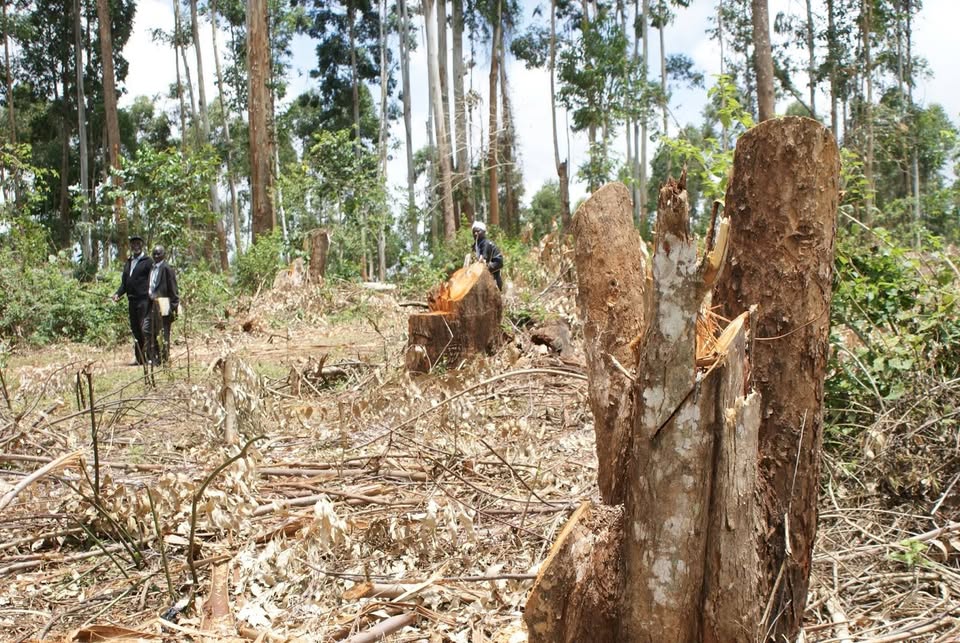
Global Climate Change
There is increasing agreement that the world has to put more measures to fight with increasingly severer climatic events due to mounting scientific substantiation. Manifestations of climate change are rising average temperatures. The last three decades temperatures have recorded warmer, increasing sea levels by an average of 1.8 mm/year between 1961 and 1993. Climate change and variability has also led to regular hurricanes, erratic rainfall, flooding, protracted droughts and destruction of coastal areas. Species’ vanishing, reduction in ecosystems diversity and negative impacts on human health.
Future IPCC projection circumstances indicate a probable range of global warming of between 0.3°C for a situation of regular levels of greenhouse gas (GHG) emissions to 6.4°C for the highest case emissions situation.
According to IPCC 2007 between 1970 and 2004, global GHG emissions increased by 70 percent. The energy sector contributed largely to global GHG emissions, increasing by about 145 percent. Over the same period, direct emissions from transport expanded by 120 percent; industry 65 percent; and land use by forestry 40 percent.
IPCC 2007, UNEP 2009 points that the country’s arid and semi-arid lands (ASALs) have witnessed a reduction in intense cold temperature occurrences, leading to depletion of glaciers on Mount Kenya. The deletion have negative implications on biodiversity and water supply in the country and tourism, whose continued double-digit growth is crucial to achieving Vision 2030 because of the vital ecological role of mountains.
The country’s growing motor vehicle numbers are commensurate with growths in the human population. Vehicles emit significant levels of air pollutants, including GHGs while charcoal burning emits methane (CH4), carbon monoxide (CO) and particulate matter into the atmosphere. These, together with rising industrial emissions, use of charcoal, wood fuel and open burning of waste, are some of the main sources of atmospheric pollution.
Rainfall is also projected to increase with many models indicating an escalation of heavy rainfall especially during the wet seasons, and an associated flood risk. Seasonal rainfall trends are mixed, with some locations indicating increasing trends while others show no significant changes. The annual rainfall totals show either neutral or slightly decreasing trends due to a general decline in the main long rains (MAM) season.
Along the coast there are signals of sea level increase. This is likely to flood agricultural lands and cause ground water salinity. These effects will be aggravated by escalating human-induced pressures on coastal areas. Sea level rises will also increase the impact of storm surges which have the potential to destroy the coastal infrastructure as has been the case in the recent past.
Consequently, urban populations have risen very swiftly and with that too is increase in GHG emissions. therefore There is need to have initiatives that uphold, development of infrastructure so as to give room for little carbon growth and allow mechanisms for mass transport such as trains and reticulated buses for main commutation, security and good water, administration practices, development of green areas, hygienic landfills, alternative energy technologies like solar heating and cooling systems.
Future IPCC projection circumstances indicate a probable range of global warming of between 0.3°C for a situation of regular levels of greenhouse gas (GHG) emissions to 6.4°C for the highest case emissions situation.
According to IPCC 2007 between 1970 and 2004, global GHG emissions increased by 70 percent. The energy sector contributed largely to global GHG emissions, increasing by about 145 percent. Over the same period, direct emissions from transport expanded by 120 percent; industry 65 percent; and land use by forestry 40 percent.
IPCC 2007, UNEP 2009 points that the country’s arid and semi-arid lands (ASALs) have witnessed a reduction in intense cold temperature occurrences, leading to depletion of glaciers on Mount Kenya. The deletion have negative implications on biodiversity and water supply in the country and tourism, whose continued double-digit growth is crucial to achieving Vision 2030 because of the vital ecological role of mountains.
The country’s growing motor vehicle numbers are commensurate with growths in the human population. Vehicles emit significant levels of air pollutants, including GHGs while charcoal burning emits methane (CH4), carbon monoxide (CO) and particulate matter into the atmosphere. These, together with rising industrial emissions, use of charcoal, wood fuel and open burning of waste, are some of the main sources of atmospheric pollution.
Rainfall is also projected to increase with many models indicating an escalation of heavy rainfall especially during the wet seasons, and an associated flood risk. Seasonal rainfall trends are mixed, with some locations indicating increasing trends while others show no significant changes. The annual rainfall totals show either neutral or slightly decreasing trends due to a general decline in the main long rains (MAM) season.
Along the coast there are signals of sea level increase. This is likely to flood agricultural lands and cause ground water salinity. These effects will be aggravated by escalating human-induced pressures on coastal areas. Sea level rises will also increase the impact of storm surges which have the potential to destroy the coastal infrastructure as has been the case in the recent past.
Consequently, urban populations have risen very swiftly and with that too is increase in GHG emissions. therefore There is need to have initiatives that uphold, development of infrastructure so as to give room for little carbon growth and allow mechanisms for mass transport such as trains and reticulated buses for main commutation, security and good water, administration practices, development of green areas, hygienic landfills, alternative energy technologies like solar heating and cooling systems.


